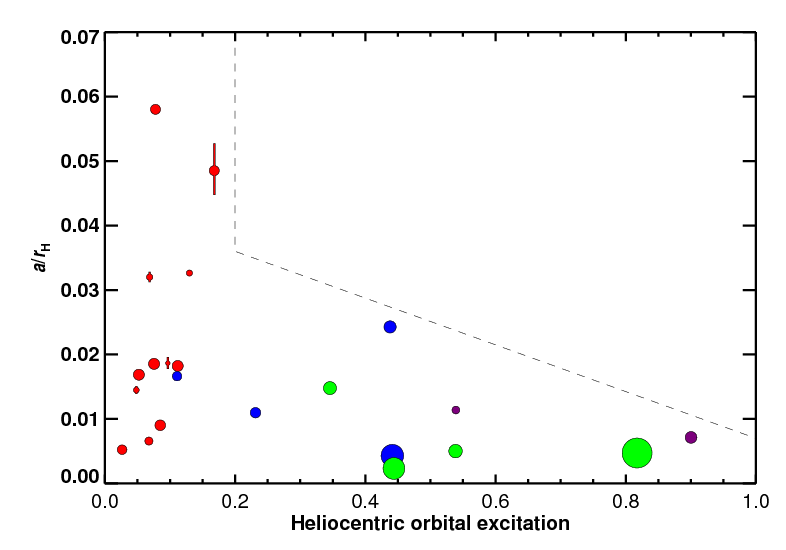
Five New and Three Improved Mutual Orbits of Transneptunian Binaries
Published in 2011: Icarus 213, 678-692.
W.M. Grundy1, K.S. Noll2, F. Nimmo3, H.G. Roe1, M.W. Buie4, S.B. Porter1, S.D. Benecchi5,6, D.C. Stephens7, H.F. Levison4, and J.A. Stansberry8
(1) Lowell Observatory, Flagstaff AZ.
(2) Space Telescope Science Institute, Baltimore MD.
(3) University of California, Santa Cruz CA.
(4) Southwest Research Institute, Boulder CO.
(5) Planetary Science Institute, Tucson AZ.
(6) Carnegie Institution of Washington, Washington DC.
(7) Brigham Young University, Provo UT.
(7) University of Arizona, Tucson AZ.
Abstract
We present three improved and five new mutual orbits of transneptunian binary systems (58534) Logos-Zoe, (66652) Borasisi-Pabu, (88611) Teharonhiawako-Sawiskera, (123509) 2000 WK183, (149780) Altjira, 2001 QY297, 2003 QW111, and 2003 QY90 based on Hubble Space Telescope and Keck II laser guide star adaptive optics observations. Combining the five new orbit solutions with 17 previously known orbits yields a sample of 22 mutual orbits for which the period P, semimajor axis a, and eccentricity e have been determined. These orbits have mutual periods ranging from 5 to over 800 days, semimajor axes ranging from 1,600 to 37,000 km, eccentricities ranging from 0 to 0.8, and system masses ranging from 2 × 1017 to 2 × 1022 kg. Based on the relative brightnesses of primaries and secondaries, most of these systems consist of near equal-sized pairs, although a few of the most massive systems are more lopsided. The observed distribution of orbital properties suggests that the most loosely-bound transneptunian binary systems are only found on dynamically cold heliocentric orbits. Of the 22 known binary mutual orbits, orientation ambiguities are now resolved for 9, of which 7 are prograde and 2 are retrograde, consistent with a random distribution of orbital orientations, but not with models predicting a strong preference for retrograde orbits. To the extent that other perturbations are not dominant, the binary systems undergo Kozai oscillations of their eccentricities and inclinations with periods of the order of tens of thousands to millions of years, some with strikingly high amplitudes.

Fig. 5. Binary binding tightness as measured by a/rH (with error bars mostly smaller than the plotting symbols), versus the excitation of the heliocentric orbit as measured by (sin(i)² + e²)½. System masses are indicated by symbol size. DES dynamical classes are indicated by color, with Resonant objects in blue, Scattered Disk objects in green, Classical objects in red, and Centaurs in purple. The loosest four binaries are all on relatively unexcited Classical heliocentric orbits. A large region of the plot, approximately bounded by a dashed line, remains unpopulated, despite many objects with that range of heliocentric orbital excitations having been searched for companions.